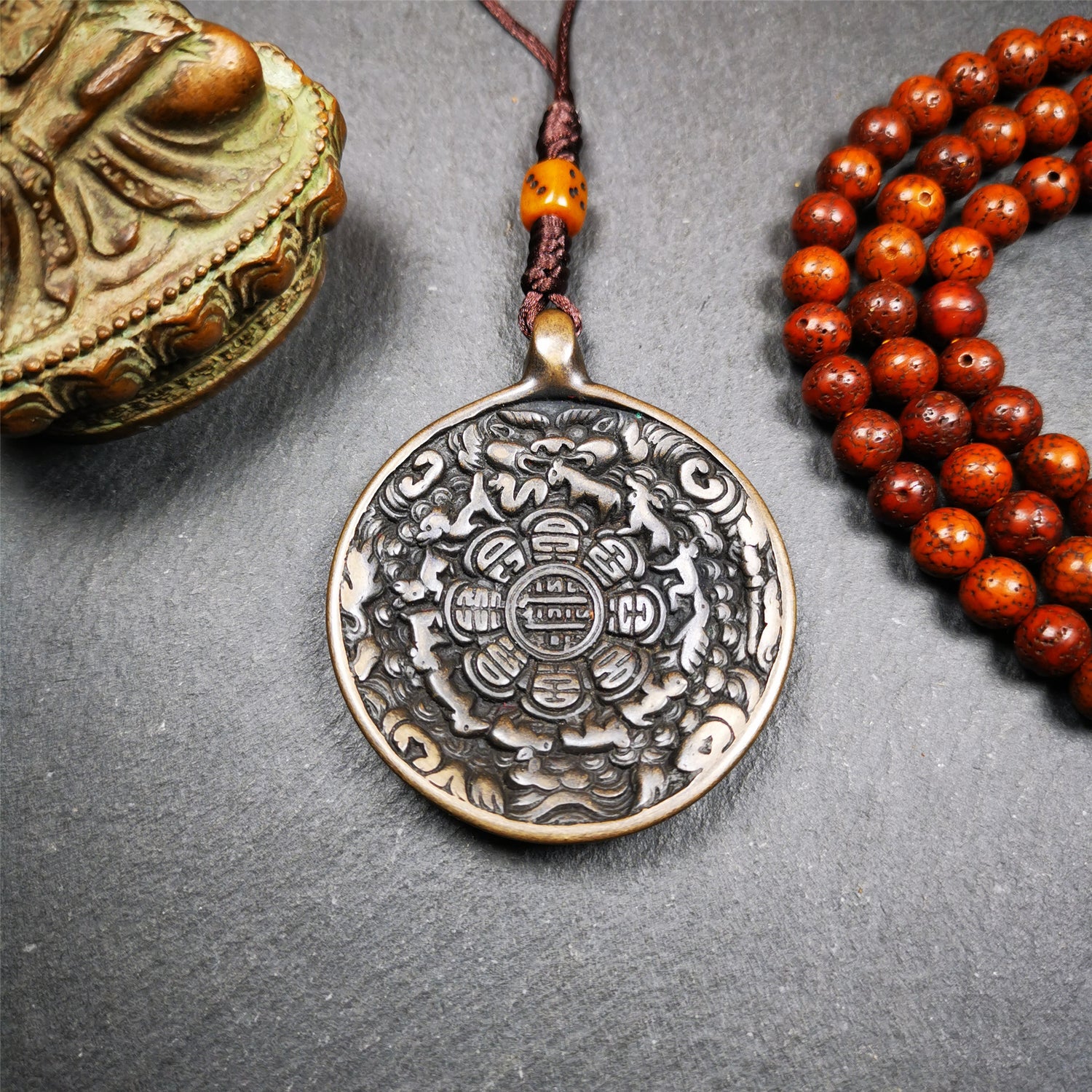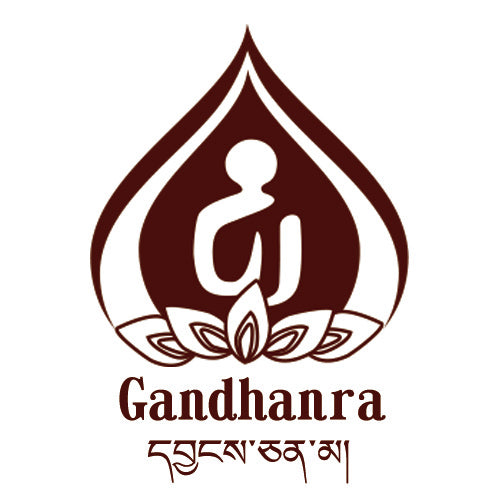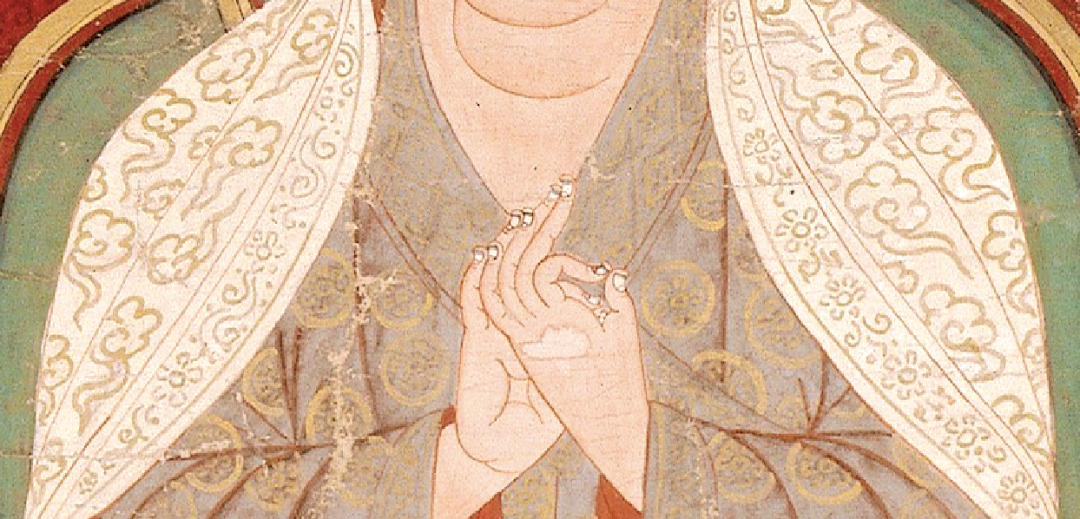
"Tanci Lotus Seat", 18th century, Rubens Museum
White color stands in the middle of the five colors
Representing the Great Sun Buddha among the "Five Buddhas"
Also symbolizing the pure and clean lotus flower disc
The culture of color and color theory often imply a unique life essence and way of life for a particular group or cultural community. Through the encrypted symbol system of "color", people are able to acquire multiple social identities between everyday trends and established structures. When intuitive and intimate visual experiences occur, people not only need to consider the attributes, effects, and meanings of "color", but more importantly, they see their own colors in the colorful world. The infinite pleasure brought by this sensory impact is a unique decryption game time and time again.
མཛེས་པའི་ཉམས་འགྱུར་བསྒྲིབས་པ་ཡིན
།Beauty may fade with time, but true elegance lies in one's form.
Just like a beautiful face hidden under shabby clothes,
It is difficult to display natural beauty
(Tibetan painting proverb)
* The original text discusses the relationship between form and color in Tibetan painting tradition.
མཆེད་གྲོགས་སྐྱོང་བའི་སེམས་པའི་མཚོན་བྱེད་ཡིན།
The color of white clay reveals true intentions,
Like the sincere hearts of close friends.
(Tibetan painting world proverb)
* The color of white clay is commonly known as milk white (འོ་དཀར་)
སྦྱར་ཚོན་བུ་རྒྱུད་འདི་ལས་སྐྱེས།
The mother of all colors is white
Composite colors are derived from here
Demagexi Danzeng Pengcu
དེའུ་དམར་དགེ་བཤེས་བསྟན་འཛིན་ཕུན་ཚོགས་
(1672-?)

"Milariba," 14th century, Rubin Museum

Local: White felt monastic robe(གྲུབ་པའི་དཀར་གོས་)
Traditional indigenous religious attire (secular practitioner)
With the reinterpretation of tantric yoga practices in Tibetan Buddhism
Enabling the practitioners to embody dual identities

Local: Trunk of Elephant(ཚོགས་བདག་)
Initially a core deity in South Asian religions, Ganesha
has transformed into a Tantric deity known as Elephant-Nosed Sky
His translucent white body is referred to as "ivory white"in Tibetan (གླང་དཀར་)
In the introductory article on Tibetan color theory, I worked to construct a color memory that belongs to the Himalayan and Tibetan regions. In the following series of articles, I will use the traditional classification of the "Five Primary Colors" (white-yellow-red-blue-green/black) to introduce the use of colors and color meanings in the traditional culture of the Himalayas and Tibet. It is important to note that in traditional literature, the knowledge of Tibetan color theory comes from four sources: local culture, Han Chinese painters (རྒྱ་ནག་བྲིས་པ་), South Asian deities (འཕགས་ཡུལ་ལྷ་ཚོགས་), and "Dasa" elders (understood as Central Asia).
In today's first article, white will be the protagonist of the stage. As mentioned earlier, "white" (དཀར་) is the mother of all colors, a pure container that wraps everything, a barrier that separates the human world from the heavenly realm, and the ancestral color since the Tubo period (snow-capped mountains + white yaks). In traditional artistic concepts, "white" is marked as the Tibetan numeral one (༡), and can also be represented by the first letter KA (ཀ་) in Tibetan script.

"The Four Elements", 19th century, private collection
White disks represent the source of life: the water element
In traditional culture, the color white is considered as the elemental color that makes up the world, symbolizing the power of benevolent gods. White is believed to be able to seal away any ill omens. In all folk customs related to the Tibetan region, white has always been a central color. White sheep, white ornaments, and white clothing are essential elements for celebrating the New Year, and the white khata is the only authentic type of khata in Tibetan culture. The appearance of white signifies a harmonious state of daily order, and a world filled with white objects implies the presence of divine beings.
When Emperor Qianlong's mother, the Holy Empress Dowager, passed away, the Tibetan regions also held mourning ceremonies accordingly. In the biographical literature of that time, it was recorded that the chief ministers and officials of the Qing court all dressed in white and wore plain official hats to show their respect, following the customs of the inner land. The Tibetan nobles and officials who had received titles from the Qing court were also required to dress in the same way. Therefore, the Tibetan officials wore yellow bowl hats and white woolen clothes for several days, in accordance with the Qing customs. The Tibetan officials were confused because the auspicious color in the Tibetan region (white) was similar to the mourning attire of the Han region.

Local: Akamatsu Tokuzan
Wearing a white headscarf
Shoulders draped in white cloth
Hands holding an auspicious white scarf (prototype of Hada)
The chief possesses the ancestral divine power
Can issue commands and decrees

"The White Heaven" - 19th century, private collection
Baifan Tian combines the dual image of the local ancestral mountain god (white)and the spirit of South Asia.
The colors white and red are often paired together like a husband and his concubines,
with the sun shining brightly in contrast to the moonlight.

"Dainichi Nyorai Altar City," 13th century, private collection
With the introduction of Buddhist principles, the sacred attribute of white in indigenous culture was preserved and added with a special symbol of wisdom.
White symbolizes "resting activities" in the four activities.

"The Guardian King Zhao Yun", 19th century, Ruben Museum
"Guardian King Yun, Protector of the Law" - Han Dynasty's Guan Yu (with his Consort)
His image combines characteristics of Guan Yu and Erlang Shen
He is depicted with a white face when in a benevolent form
And a red face when in a fierce form
 Local:Guan Gong's facial features
Local:Guan Gong's facial features

"Second Patriarch of the Sakya School," 15th century, Boston Museum of Fine Arts
The symbol of white clothing speaks for itself.
Let's discuss two classic relationships about white outfit with this image.
 Local 1
Local 1
"White and orange" meeting like "blind people"
Colors fresh but without rules
Need relatives to open their eyes (grey lines)"
 Local 1
Local 1
"White ash" meets as "relatives"
Embracing each other, shedding tears, talking about family affairs.



